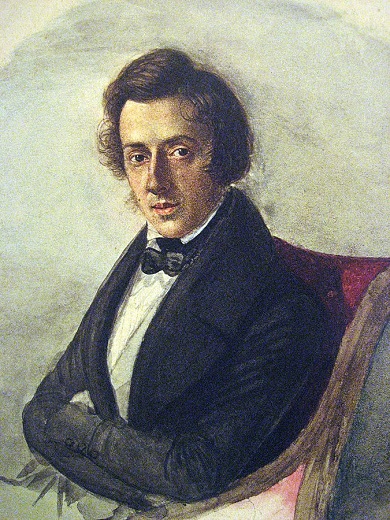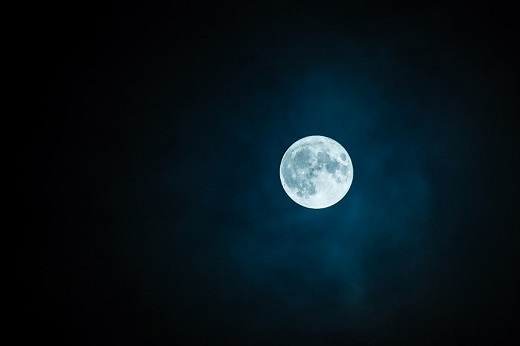
There are so many people who love Chopin’s music, aren’t there? It’s hard to find someone who dislikes it!
While many other composers wrote for various instruments, Chopin primarily composed for the piano, earning him the nickname “Poet of the Piano.”
One of the characteristics of his works is their vocal-like melodies, which set them apart from those of other composers. These lyrical melodies are what touch people’s hearts!
Among Chopin’s works, the Nocturnes are especially known for their beautiful melodies. Many of these pieces have become famous, frequently used in commercials and movies.
In this article, I’ll introduce what Nocturnes are while ranking them by difficulty.
■ 目次
- 1 The “Nocturne” Is Not a Title!? What Does It Mean?
- 2 Chopin Wasn’t the Only One Who Composed “Nocturnes”!!
- 3 Did Chopin Consider “Nocturnes” to Be Very Important Works?
- 4 Difficulty Levels of All 21 Chopin “Nocturnes” Explained!
- 5 Focusing on Famous Pieces: Tips and Difficulty Levels for Playing Nocturnes
- 6 Summary
The “Nocturne” Is Not a Title!? What Does It Mean?

The word “Nocturne” is not the title of an individual piece but a term that describes the character of a piece.
The term “Nocturne” originates from the Latin word nox, which means “night.” In Japanese, it is translated as “夜想曲” (yasōkyoku), meaning “nightly thoughts” or “nocturne.” (It’s unclear who first translated it as “夜想曲.”)
Because Nocturnes often have a calm and serene tone, this translation beautifully captures their essence.
In the Classical era, before Chopin’s time, major works often took the form of sonatas. Composers like Haydn, Mozart, and Beethoven wrote many sonatas during this period.
However, during the Romantic era, when Chopin was active, sonatas were no longer the dominant form. Instead, shorter works called “character pieces” became more prominent.
Character pieces are short compositions created with free imagination. Examples include Nocturnes, Polonaises, Mazurkas, Waltzes, Scherzos, and Ballades. These are collectively referred to as “character pieces.”
Each of these pieces has its own unique character.
For example, Polonaises are in triple meter and incorporate rhythms unique to Poland. Waltzes, also in triple meter, are either meant for ballroom dancing or evoke the imagery of a ballroom.
The rise of character pieces in the Romantic era was influenced by the societal changes brought about by the French Revolution. As society evolved, so did people’s ways of thinking, and this extended to artists.
In the Classical era, composers emphasized “form,” but in the Romantic era, the focus shifted to “individuality.” In other words, composers began to reflect their personal emotions in their works and sought to express their unique characteristics.
Because sonatas had to adhere to strict structural rules, they were not as suited for expressing individuality.
Have you ever been told to “sing more!” when playing Romantic pieces?
Composers of this era infused their works with deep emotions, so as performers, we must interpret their feelings from the sheet music and immerse ourselves emotionally when playing.
This is both the beauty and the challenge of Romantic-era compositions.
Chopin Wasn’t the Only One Who Composed “Nocturnes”!!
It was not Chopin who first composed Nocturnes. The founder of the piano Nocturne is said to be John Field, an Irish composer. (Although the term “Nocturne” dates back to the medieval period, it was Field who first applied it to piano music.)Features of Field’s Nocturnes:
Left hand: Accompaniment in arpeggiated form
Right hand: Beautiful melody
Chopin was influenced by Field’s Nocturnes and based his own works on them. However, rather than simply imitating, Chopin refined and elevated the form.
In addition to Chopin, other composers also wrote Nocturnes (e.g., Czerny, Liszt, Clara Schumann, Debussy, Fauré, etc.).
Even those who are well-versed in classical music, when they hear the term “Nocturne,” likely think of Chopin.
This shows just how superior and famous Chopin’s Nocturnes are compared to those of other composers.
Did Chopin Consider “Nocturnes” to Be Very Important Works?

Chopin composed 21 nocturnes.
Numbers 19 to 21 are posthumous works.
No. 20 is not labeled as a nocturne but as Lento con gran espressione.
This piece was a gift to Chopin’s sister. Later, when his sister referred to it as a “nocturne-like lento,” it came to be classified as a nocturne.
No. 21 was long considered lost but was discovered to be part of the Rothschild family’s collection and was published in 1938.
The other 18 nocturnes, excluding the posthumous works, were not published all at once but in sets of three or two.
The nocturnes were not composed during a single period but were written throughout Chopin’s life, from his youth to his later years. (He composed his first nocturne in his mid-teens.)
In addition to nocturnes, Chopin was also prolific in writing waltzes (19 in total), polonaises (16 in total), and mazurkas (about 58, including early works).
The fact that he continued composing these works throughout his life indicates that they held great significance for Chopin.
Difficulty Levels of All 21 Chopin “Nocturnes” Explained!
Difficulty is subjective and may vary for each person, but please use this as a reference.★ No. 6 in G Minor, Op. 15-3
★★ No. 2 in E-flat Major, Op. 9-2
No. 21 in C Minor (Posthumous)
★★★ No. 9 in B Major, Op. 32-1
No. 11 in G Minor, Op. 37-1
No. 15 in F Minor, Op. 55-1
No. 19 in E Minor, Op. 72-1 (Posthumous)
No. 20 in C-sharp Minor (Posthumous)
★★★★ No. 1 in B-flat Minor, Op. 9-1
No. 10 in A-flat Major, Op. 32-2
★★★★★ No. 14 in F-sharp Minor, Op. 48-2
No. 17 in B Major, Op. 62-1
No. 18 in E Major, Op. 62-2
★★★★★★ No. 3 in B Major, Op. 9-3
No. 5 in F-sharp Major, Op. 15-2
No. 7 in C-sharp Minor, Op. 27-1
No. 16 in E-flat Major, Op. 55-2
★★★★★★★ No. 4 in F Major, Op. 15-1
No. 8 in D-flat Major, Op. 27-2
No. 12 in G Major, Op. 37-2
★★★★★★★★ No. 13 in C Minor, Op. 48-1
※ Difficulty is represented by the number of ★. The numbers correspond to the nocturne numbers.
I consider No. 6 to be the most suitable for beginners.
No. 6 has minimal left-hand movement, and the right-hand melody is somewhat subdued. It does not convey much of Chopin’s distinctiveness. While it is low in difficulty and relatively easy to play, it might not be particularly interesting to perform.
It is said that Chopin composed this piece the day after watching Hamlet. Before its publication, it had been given the title “At the Cemetery,” which makes its melancholic tone more understandable.
Conversely, I find No. 13 to be the most challenging. No. 13 is a famous piece, isn’t it? I will explain this piece in more detail later.
I own the Paderewski edition (which contains only 19 pieces). The Henle and Zen-On editions include the posthumous works.
Focusing on Famous Pieces: Tips and Difficulty Levels for Playing Nocturnes
Difficulty Levels of Famous Pieces
No. 2 (E-flat Major, Op. 9-2): ★★
It seems this piece was featured in the movie Love Story.
This is the most famous of Chopin’s nocturnes, but it has a relatively low difficulty level and is easy to play.
If you are attempting a famous nocturne, starting with No. 2 is a great idea.
If you look at the left-hand accompaniment, you’ll notice the number of notes played increases from one to two, then three. When the left hand shifts to playing three-note chords, the volume might inadvertently become louder, resulting in a less polished performance. Be mindful not to let the volume increase.
No. 13 (C Minor, Op. 48-1): ★★★★★★★★

This is the grandest of Chopin’s nocturnes.
It has the highest difficulty level among the nocturnes, with three challenging sections:
1. The arpeggios in the part where it modulates to C major
2. The continuous octaves in the middle section
3. The Doppio movimento section (where the main theme returns), requiring the simultaneous execution of chords and melody
No. 20 (C-sharp Minor, Posthumous): ★★★

This piece was featured in the movie The Pianist. I personally found the movie memorable due to its many questionable points (such as how the protagonist, who had been unable to play for so long, could suddenly perform flawlessly).
Setting the movie aside…
This nocturne incorporates melodies and motifs from the Piano Concerto No. 2. In fact, it was composed as a practice piece for Chopin’s sister to help her play the concerto.
In terms of difficulty, it’s not particularly high, but the rapid notes in the latter half can be challenging to play smoothly.
Pieces That May Not Be as Famous but Are Personal Favorites
No. 1 (B-flat Minor, Op. 9-1): ★★★★The opening melody is strikingly beautiful and vocal-like, embodying Chopin’s characteristic style.
The left-hand arpeggios may be slightly challenging. Keep your wrist flexible and use it effectively. Practice the right-hand passages separately to achieve a smooth flow for the rapid notes.
No. 3 (B Major, Op. 9-3): ★★★★★★
The melody is constantly moving, which gives this piece its unique charm.
The Agitato section contrasts sharply with the dreamy atmosphere of the earlier parts, introducing a rhythmic, aggressive character. This contrast enhances the overall structure of the piece.
No. 12 (G Major, Op. 37-2): ★★★★★★★
This piece is said to have been inspired by Chopin’s trip to Majorca with George Sand.
The frequent double notes in the right hand make this piece challenging, but they are also incredibly beautiful. The key to mastering this nocturne lies in enjoying and differentiating the subtle changes in tone.
General Tips for Playing Nocturnes
A common piece of advice when playing nocturnes is to not neglect the left hand.When playing pieces by composers prior to Chopin, the left hand often doesn’t pose much difficulty because its accompaniment patterns are generally fixed, requiring only basic finger movements.
Chopin, however, transformed the role of the left hand by introducing scales, arpeggios, and other patterns to ornament the harmony. This innovation made the left-hand accompaniment more fluid and varied, requiring a different playing approach that involves the wrist and arm.
While the left hand serves as an accompaniment, it also enhances the right-hand melody, making it shine. Neglecting the left hand can result in a lackluster performance, no matter how beautifully the right-hand melody is played.
Instead of focusing solely on the right-hand melody, pay attention to the left hand and how it complements the overall piece.
Summary
- “Nocturne” refers to a term describing the character of a piece of music.
- The creator of the nocturne genre is John Field.
- The structure of a nocturne: left hand plays broken chord accompaniment, while the right hand plays a beautiful melody.
- There are 21 nocturnes in total (No. 19 to No. 21 are posthumous works).
- The easiest nocturne is No. 6, while the most challenging is No. 13.
- Using patterns like scales and broken chords, nocturnes decorate harmonies and transform accompaniments into freer forms than before.
- Do not neglect the left hand.
- IMSLP
Nos. 1-3 Op. 9 (Sheet Music Link) Nos. 4-6 Op. 15 (Sheet Music Link) Nos. 7-8 Op. 27 (Sheet Music Link) Nos. 9-10 Op. 32 (Sheet Music Link) Nos. 11-12 Op. 37 (Sheet Music Link) Nos. 13-14 Op. 48 (Sheet Music Link) Nos. 15-16 Op. 55 (Sheet Music Link) Nos. 17-18 Op. 62 (Sheet Music Link) No. 19 Op. 72-1 (Sheet Music Link)
All of the above are public domain sheet music published by Breitkopf & Härtel between 1878 and 1880.
No. 20 (Sheet Music Link) Originally published by Maurice Senart in 1945, now in the public domain.
No. 21 (Sheet Music Link) Originally published by Polish Music Publishing in 1955, now in the public domain.
- Explore Chopin’s Nocturnes: Difficulty Rankings and Beautiful Melodies 2017/5/24 ←Currently Viewing Article
- ピアノ講師が伝授!ショパン「ノクターン第2番Op.9-2」難易度と弾き方のコツ! 2017年7月22日
- ショパン「ノクターンop.9-2」難易度中級者☆愛され弾き方研究 2017年7月31日
- 練習曲として弾く!ショパン「ノクターン第2番変ホ長調Op.9-2」ピアノの弾き方と難易度 2017年8月8日
- ショパンノクターン20番の難易度とワンランクアップさせる弾き方(夜想曲嬰ハ短調「遺作」) 2017年9月9日
- 自由に表現!ショパン『ノクターン第1番op.9-1』弾き方のコツと難易度 2017年9月26日
- 繊細に表現!ショパン『ノクターン第20番嬰ハ短調遺作』の弾き方と難易度 2018年8月5日
- ショパン「ノクターン第2番Op.9-2」難易度と効率的な弾き方を解説! 2018年10月8日
- ショパン「ノクターン第13番ハ短調Op.48-1」の難易度と弾き方を解説!! 2018年10月27日
- ショパン「ノクターン第8番変ニ長調Op.27-2」難易度と弾き方のポイントは? 2019年8月8日












